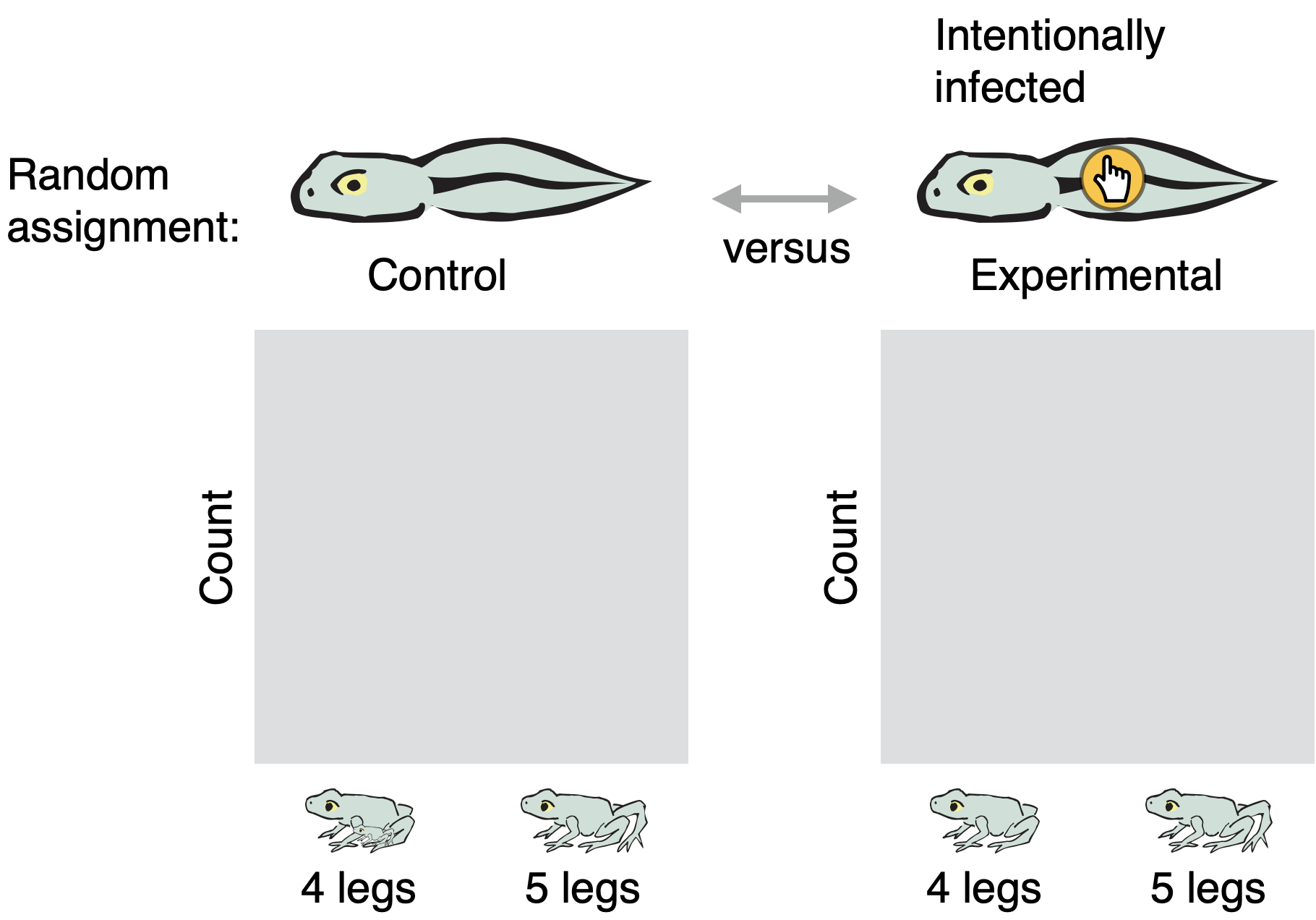B.2 Experimental Studies
The best kind of experiment is a randomized controlled experiment. To test the hypothesis that parasites cause deformities, you could take uninfected tadpoles from Top Pond and flip a coin to assign each to either an experimental group or a control group. You could put the experimental tadpoles in one of the tanks and the control tadpoles in another. You could then infect each of the experimental tadpoles with parasites (by dragging a worm and setting it on top of the tadpole). Finally, you could run the simulation just long enough for all of your tadpoles to grow up. If parasites cause deformity, then you should see a higher rate of deformity in your experimental frogs than in your controls.
In this study, the experimental versus control frogs came from the same pond. If there is some hidden variable, such as a toxin in the water, then assigning the frogs to study groups at random will have ensured that just as many controls will have been exposed to the toxin as experimentals. The only thing that differs systematically between the two groups is whether or not they are infected with parasites. If the experimental frogs show a higher rate of deformity, we can be confident that infection with parasites is the cause.
You might organize the data from an experimental study like this:

Sketch graphs showing the pattern in the data if the environmental variation hypothesis is correct and if it is incorrect.